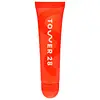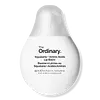What's inside
What's inside
 Key Ingredients
Key Ingredients

 Benefits
Benefits

 Concerns
Concerns

No concerns
 Ingredients Side-by-side
Ingredients Side-by-side

Hydrogenated Polyisobutene
EmollientPolybutene
Diisostearyl Malate
EmollientHydrogenated Soybean Oil
EmollientHydrogenated Olive Oil
Skin ConditioningPolyhydroxystearic Acid
EmulsifyingHydrogenated Jojoba Oil
AbrasiveEthylene/Propylene/Styrene Copolymer
Copernicia Cerifera Wax
Euphorbia Cerifera Wax
Lauroyl Lysine
Skin ConditioningButyrospermum Parkii Butter
Skin ConditioningRicinus Communis Seed Oil
MaskingCaprylyl Glycol
EmollientTocopherol
AntioxidantEthylhexylglycerin
Skin ConditioningPhytosterols
Skin ConditioningTocopheryl Acetate
AntioxidantButylene/Ethylene/Styrene Copolymer
Simmondsia Chinensis Seed Oil
EmollientGlycine Soja Oil
EmollientCocos Nucifera Oil
MaskingPentaerythrityl Tetra-Di-T-Butyl Hydroxyhydrocinnamate
AntioxidantAroma
Benzyl Alcohol
PerfumingBenzyl Benzoate
AntimicrobialIron Oxides
CI 15850
Cosmetic ColorantHydrogenated Polyisobutene, Polybutene, Diisostearyl Malate, Hydrogenated Soybean Oil, Hydrogenated Olive Oil, Polyhydroxystearic Acid, Hydrogenated Jojoba Oil, Ethylene/Propylene/Styrene Copolymer, Copernicia Cerifera Wax, Euphorbia Cerifera Wax, Lauroyl Lysine, Butyrospermum Parkii Butter, Ricinus Communis Seed Oil, Caprylyl Glycol, Tocopherol, Ethylhexylglycerin, Phytosterols, Tocopheryl Acetate, Butylene/Ethylene/Styrene Copolymer, Simmondsia Chinensis Seed Oil, Glycine Soja Oil, Cocos Nucifera Oil, Pentaerythrityl Tetra-Di-T-Butyl Hydroxyhydrocinnamate, Aroma, Benzyl Alcohol, Benzyl Benzoate, Iron Oxides, CI 15850
Squalane
EmollientSorbitan Olivate
EmulsifyingWater
Skin ConditioningTrihydroxystearin
Skin ConditioningBetaine
HumectantJojoba Esters
EmollientHelianthus Annuus Seed Wax
Skin ConditioningSodium PCA
HumectantPCA
HumectantSerine
MaskingAlanine
MaskingArginine
MaskingProline
Skin ConditioningGlycine
BufferingGlutamic Acid
HumectantLysine Hcl
Skin ConditioningThreonine
Sodium Lactate
BufferingAdansonia Digitata Seed Oil
EmollientCaprylic/Capric Triglyceride
MaskingAcacia Decurrens Flower Wax
EmollientPolyglycerin-3
HumectantHydroxymethoxyphenyl Decanone
Skin ConditioningTocopherol
AntioxidantCalcium Gluconate
HumectantGluconolactone
Skin ConditioningSodium Benzoate
MaskingSqualane, Sorbitan Olivate, Water, Trihydroxystearin, Betaine, Jojoba Esters, Helianthus Annuus Seed Wax, Sodium PCA, PCA, Serine, Alanine, Arginine, Proline, Glycine, Glutamic Acid, Lysine Hcl, Threonine, Sodium Lactate, Adansonia Digitata Seed Oil, Caprylic/Capric Triglyceride, Acacia Decurrens Flower Wax, Polyglycerin-3, Hydroxymethoxyphenyl Decanone, Tocopherol, Calcium Gluconate, Gluconolactone, Sodium Benzoate
 Reviews
Reviews

Ingredients Explained
These ingredients are found in both products.
Ingredients higher up in an ingredient list are typically present in a larger amount.
Tocopherol (also known as Vitamin E) is a common antioxidant used to help protect the skin from free-radicals and strengthen the skin barrier. It's also fat soluble - this means our skin is great at absorbing it.
Vitamin E also helps keep your natural skin lipids healthy. Your lipid skin barrier naturally consists of lipids, ceramides, and fatty acids. Vitamin E offers extra protection for your skin’s lipid barrier, keeping your skin healthy and nourished.
Another benefit is a bit of UV protection. Vitamin E helps reduce the damage caused by UVB rays. (It should not replace your sunscreen). Combining it with Vitamin C can decrease sunburned cells and hyperpigmentation after UV exposure.
You might have noticed Vitamin E + C often paired together. This is because it is great at stabilizing Vitamin C. Using the two together helps increase the effectiveness of both ingredients.
There are often claims that Vitamin E can reduce/prevent scarring, but these claims haven't been confirmed by scientific research.
Learn more about Tocopherol